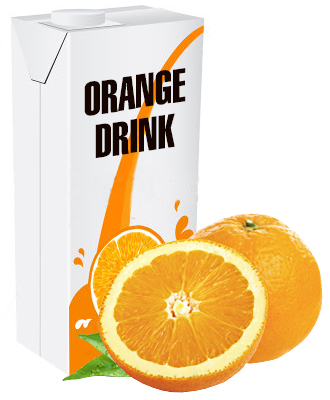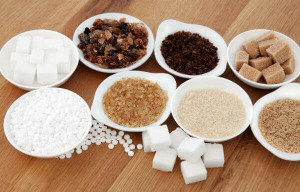
Sugar - the good, the bad and the ugly
Have you recently heard someone saying “I’m quitting sugar”? It’s not uncommon these days where sugar is a hot topic. It’s been labelled ‘toxic’ and ‘pure, white and deadly’. In particular, there has been a lot of focus on the impact of sugar-sweetened beverages (SSBs) on dental health with media reports showing young toddlers having to get teeth extracted!
For many years, sugar has been used as a functional ingredient in cooking for example to preserve fruit jams or added to bread making to activate the yeast. Sugar used to be an exclusive ingredient and hard to get but with the ease of processing, sugar has become readily available and used in many processed foods.
Sugary foods are very palatable, can easily be over-consumed and promote a positive energy balance leading to weight gain. SSBs increases the energy density of the diet, adding empty calories that are not filling, and are often consumed in conjunction with other fatty foods (e.g. a coke and a pie).
The main health problems associated with too much sugar intake are tooth decay and overweight/obesity and the related non-communicable diseases. While people suffering from Type 2 diabetes must monitor their sugar intake, it is overweight and unhealthy lifestyle issues which cause the condition, not the sugar itself!
What is Sugar?
Sugars are all forms of carbohydrates. Carbohydrate is an important part of a healthy diet, but should ideally be ‘complex’ carbohydrates in the form of wholegrain foods, fruit and vegetables. Carbohydrate is the main source of energy and when broken down to glucose is easily available for the body’s cells to use for metabolic processes. Glucose is also the preferred source of energy for the brain.
 The World Health Organization (WHO) distinguishes between ‘free sugars’ and ‘intrinsic sugars’. Free sugars include mono- and disaccharides such as glucose, fructose and sucrose (‘table sugar’) which are added to foods and drinks by the manufacturer, cook or consumer, and sugars that are naturally found in foods such as honey and fruit juice concentrates. There is evidence that keeping these types of sugars to a minimum is beneficial for reducing the risk of overweight, obesity and tooth decay. Intrinsic sugars are those found in whole fruit and vegetables. These sugars are not associated with health risks as they are encapsulated in a fibrous plant cell wall which means they are digested more slowly and results in better blood sugar control, a lowered insulin response and hence less signalling for fat storage.
The World Health Organization (WHO) distinguishes between ‘free sugars’ and ‘intrinsic sugars’. Free sugars include mono- and disaccharides such as glucose, fructose and sucrose (‘table sugar’) which are added to foods and drinks by the manufacturer, cook or consumer, and sugars that are naturally found in foods such as honey and fruit juice concentrates. There is evidence that keeping these types of sugars to a minimum is beneficial for reducing the risk of overweight, obesity and tooth decay. Intrinsic sugars are those found in whole fruit and vegetables. These sugars are not associated with health risks as they are encapsulated in a fibrous plant cell wall which means they are digested more slowly and results in better blood sugar control, a lowered insulin response and hence less signalling for fat storage.
The WHO recommends that adults and children reduce their daily intake of free sugars to less than 10% (50g or 12 teaspoons) of their total energy intake; a further reduction to below 5% (25 grams or 6 teaspoons) per day would provide additional health benefits. As this recommendation is for ‘free sugars’ it also includes added ‘natural’ sugars from e.g. honey and fruit juice, but excludes intrinsic sugars from fruit, vegetables and milk as these are important foods as part of a healthy, balanced diet.
How easy is it to reduce your sugar?
It depends on how much sugar you usually have in your diet. In New Zealand, the last Adult Nutrition Survey reported a mean daily sugar intake from total sugars of 120g for males and 96g for females. The median daily intake for sucrose was 55g (males) and 42g (females). The main sources of total sugars were fruit, non-alcoholic drinks, sugar and sweets, milk, cakes and muffins. A standard 600ml Coke has 16 teaspoons of sugar in it – already 4 teaspoons above the 10% recommendations! And this is just one drink out of a whole day’s diet…
Some people who go completely sugar-free also end up excluding good foods such as fruit which is not a sensible approach. A reasonable approach is to enjoy sugar in moderation as part of a balanced diet. It is OK to include a little sugar – it is NOT toxic! Foods high in added sugar such as lollies, muffins, cakes, biscuits and muesli bars should be regarded as ‘treats’ and enjoyed in small quantities on special occasions. SSBs should be replaced with water or low fat milk. Use fruit to sweeten baking rather than adding sugar. There are many low-sugar recipe variations available on the Healthy Food Guide website (www.healthyfood.co.nz).
Choose wholefoods over processed foods as this is where sugars are hidden. Sugars hide in obvious products such as cereals and muesli bars as well as those labelled as ‘low-fat’ (e.g. yoghurt), but they also hide in less obvious foods such as tomato sauce, peanut butter, bread and stir-fry sauces. So look out for sugars in products when comparing the nutrition label per 100g. There is roughly 4 grams of sugar in one teaspoon so to do a quick calculation of how much sugar is in your food and drink, divide the amount of sugars in grams by 4.
What about white sugar alternatives?
There is also an issue with ‘health halos’ around sugar in packaged food products. It is common to see the claim of ‘natural’ in relation to sugar contents. However all sugars are natural (even table sugar) as they all come from plant sources. Raw sugar is still processed sucrose but has a more coarse texture and is unbleached. Coconut sugar has seen a lot of hype recently due to its lower GI but it is still sugar, so should be limited in the diet. Honey is a mixture of glucose and fructose (just like table sugar) with only tiny amounts of nutrients. So sugar in any of its forms really is ‘empty calories’, and our body treats sugars added by the manufacturer, cook or consumer and sugars naturally present in honey or fruit juices in the same way.
 There are often questions around sugar alternatives such as artificial (e.g. aspartame) and natural (e.g. stevia) sweeteners. Choosing products sweetened with these products may help to lower the total calorie intake if you usually have a large amount of sugar in your diet. However, it does nothing to solve the problem of a ‘sweet tooth’. The best strategy is to gradually lower the amount of sugar in your diet – i.e. buy products with no added sugar, gradually use less sugar in your coffee or tea, and reduce the amount of sugar in recipes. You can train your taste buds to get used to less sweat foods and in time, you will adjust.
There are often questions around sugar alternatives such as artificial (e.g. aspartame) and natural (e.g. stevia) sweeteners. Choosing products sweetened with these products may help to lower the total calorie intake if you usually have a large amount of sugar in your diet. However, it does nothing to solve the problem of a ‘sweet tooth’. The best strategy is to gradually lower the amount of sugar in your diet – i.e. buy products with no added sugar, gradually use less sugar in your coffee or tea, and reduce the amount of sugar in recipes. You can train your taste buds to get used to less sweat foods and in time, you will adjust.
The full WHO report ‘Guideline: Sugars intake for adults and children’ available here: http://www.who.int/nutrition/publications/guidelines/sugars_intake/en/

